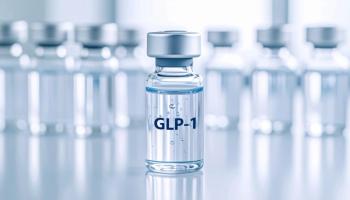
Algorithm Could Improve Drug Development Methods
An algorithm could be trained to identify potential toxicity and side effects from compounds.
Artificially intelligent algorithms have been used to identify individuals in a photo, and can even screen images as effectively as a physician.
In a majority of cases, the algorithms’ ability to complete such tasks involves rigorous training with thousands to trillions of datasets. Since there is little data regarding
In a new study published by ACS Central Science, the authors believe one-shot learning, a type of deep learning that requires a small amount of data points, could be used to improve drug development.
"We're trying to use machine learning, especially deep learning, for the early stage of drug design," said researcher Vijay Pande, PhD. "The issue is, once you have thousands of examples in drug design, you probably already have a successful drug."
The authors understood that the idea of one-shot learning providing a remedy to drug design problems may not be effective due to data constraints; however, they noted that they previously had success with machine learning with only hundreds of data points, which caused the team to pursue a long-shot idea.
The results indicate that one-shot learning methods may be a potentially effective tool for drug development and chemistry research, according to the study.
Other scientists have applied one-shot learning to image identification and genetics, but drug development proved to be different. Although pixels and bases are easily interpreted by algorithms, properties of small molecules do not come as naturally.
To make the data more understandable, the authors developed a graph that represented the molecules in terms of connections between atoms, which presents the properties in a manner the algorithm could interpret, according to the study.
The investigators then trained an algorithm with the toxicity of chemicals and side effects of approved medications. From the first dataset, the algorithm was trained about 6 chemicals and predicted the toxicity of the other 3. The algorithm was trained to associate drugs with side effects in 21 tasks with information from the second dataset.
The authors discovered that the algorithm was able to predict toxicity or side effects better than would have been possible by chance, according to the study.
"We worked on some prototype algorithms and found that, given a few data points, they were able to make predictions that were pretty accurate," said co-lead author Bharath Ramsundar.
However, the researchers cautioned that the algorithm must be properly trained, and it is not “magic.” The technique relies on the closeness of different molecules that are indirectly indicated by their formula, according to the study.
The researchers indicate that this method could be used during preliminary research to choose which molecule to develops further when there are multiple candidates.
"Right now, people make this kind of choice by hunch," Ramsundar said. "This might be a nice compliment to that: an experimentalist's helper."
This algorithm method could also be applicable to molecular chemistry. The authors have already began testing the approach on different chemical compositions for solar cells, according to the study.
"This paper is the first time that one-shot has been applied to this space and it's exciting to see the field of machine learning move so quickly," Dr Pande concluded. "This is not the end of this journey -- it's the beginning."
Newsletter
Stay informed on drug updates, treatment guidelines, and pharmacy practice trends—subscribe to Pharmacy Times for weekly clinical insights.

















































































































































































































